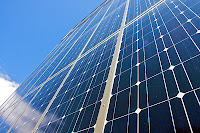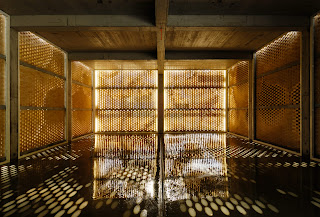Conspicuous Consumption: The “Prius Effect” for Solar Panels
by Kevin Young
 Economists have a term relating to the purchase of sustainable technologies and environmentally sensitive vehicles. It’s called “conspicuous consumption.” Defining this in laymans terms, it means to display one’s wealth or worth to others through their material goods – think of royalty flaunting fine garments, or a banker driving a Ferrari. People invest in these things not because they are necessarily better in quality or more reliable, but rather for the purpose of displaying one’s wealth to others.
Economists have a term relating to the purchase of sustainable technologies and environmentally sensitive vehicles. It’s called “conspicuous consumption.” Defining this in laymans terms, it means to display one’s wealth or worth to others through their material goods – think of royalty flaunting fine garments, or a banker driving a Ferrari. People invest in these things not because they are necessarily better in quality or more reliable, but rather for the purpose of displaying one’s wealth to others.
 Solar panels are an even more fascinating issue. Solar panels have been a large part of the California market, and a recent study was conducted in the San Diego area on the application and use of these solar panels. Two interesting things were discovered. One, large portions of California where sales of solar panels were high are not ideal for the use of solar panels. Furthermore, sunnier areas of California, in communities that are not as concerned about the environment have drastically fewer solar panels on residential rooftops. Second, there were several cases in which solar panels were actually placed on the wrong side of the house, not as a simple mistake but rather because homeowners wanted to display their solar panels to the street. It is fascinating that people care more about the image of being sustainable than making any lifestyle changes to actually be more environmentally conscious.
Solar panels are an even more fascinating issue. Solar panels have been a large part of the California market, and a recent study was conducted in the San Diego area on the application and use of these solar panels. Two interesting things were discovered. One, large portions of California where sales of solar panels were high are not ideal for the use of solar panels. Furthermore, sunnier areas of California, in communities that are not as concerned about the environment have drastically fewer solar panels on residential rooftops. Second, there were several cases in which solar panels were actually placed on the wrong side of the house, not as a simple mistake but rather because homeowners wanted to display their solar panels to the street. It is fascinating that people care more about the image of being sustainable than making any lifestyle changes to actually be more environmentally conscious.
On one hand, it’s very discouraging to know that a technology is being misused. Yet seen in another light, this has interesting implications moving forward. If the environmentally conscious consumer wishes to display their “green-ness,” what if there was a way to design and group appropriate technologies so that they are made more visible? What if sustainable technologies were integrated into the design and became completely revealed for all to see? What if we celebrated these technologies rather than trying to hide them within our traditional design language? Furthermore, the tax advantages associated with solar energy are getting better each year, allowing solar users to take advantage of credits and deductions when they file their income taxes for the year. This way, a homeowner could proudly show their latest sustainable gadgetry, and gain the maximum amount of benefit from it, both economically and environmentally. It would be fascinating to see how talented designers can come up with creative solutions that push this idea further.
 Economists have a term relating to the purchase of sustainable technologies and environmentally sensitive vehicles. It’s called “conspicuous consumption.” Defining this in laymans terms, it means to display one’s wealth or worth to others through their material goods – think of royalty flaunting fine garments, or a banker driving a Ferrari. People invest in these things not because they are necessarily better in quality or more reliable, but rather for the purpose of displaying one’s wealth to others.
Economists have a term relating to the purchase of sustainable technologies and environmentally sensitive vehicles. It’s called “conspicuous consumption.” Defining this in laymans terms, it means to display one’s wealth or worth to others through their material goods – think of royalty flaunting fine garments, or a banker driving a Ferrari. People invest in these things not because they are necessarily better in quality or more reliable, but rather for the purpose of displaying one’s wealth to others.
What does this have to do with environmental technologies? Well, through several recent studies, it has been revealed that amidst the recent concern for the environment and mitigating the effects of global climate change, consumers are more willing to invest in cars and technologies to showcase that they are being environmentally sensitive. Think of it as the “Prius Effect.” The Prius is the clearest example of this phenomenon – multiple studies have shown that there are other cars that are equal in sustainable benchmarks, such as the Toyota Camry Hybrid, but still the Prius claims approximately half of the hybrid car market. The Prius out sells all of the other cars for one primary reason – it looks like a hybrid car.
 Solar panels are an even more fascinating issue. Solar panels have been a large part of the California market, and a recent study was conducted in the San Diego area on the application and use of these solar panels. Two interesting things were discovered. One, large portions of California where sales of solar panels were high are not ideal for the use of solar panels. Furthermore, sunnier areas of California, in communities that are not as concerned about the environment have drastically fewer solar panels on residential rooftops. Second, there were several cases in which solar panels were actually placed on the wrong side of the house, not as a simple mistake but rather because homeowners wanted to display their solar panels to the street. It is fascinating that people care more about the image of being sustainable than making any lifestyle changes to actually be more environmentally conscious.
Solar panels are an even more fascinating issue. Solar panels have been a large part of the California market, and a recent study was conducted in the San Diego area on the application and use of these solar panels. Two interesting things were discovered. One, large portions of California where sales of solar panels were high are not ideal for the use of solar panels. Furthermore, sunnier areas of California, in communities that are not as concerned about the environment have drastically fewer solar panels on residential rooftops. Second, there were several cases in which solar panels were actually placed on the wrong side of the house, not as a simple mistake but rather because homeowners wanted to display their solar panels to the street. It is fascinating that people care more about the image of being sustainable than making any lifestyle changes to actually be more environmentally conscious. On one hand, it’s very discouraging to know that a technology is being misused. Yet seen in another light, this has interesting implications moving forward. If the environmentally conscious consumer wishes to display their “green-ness,” what if there was a way to design and group appropriate technologies so that they are made more visible? What if sustainable technologies were integrated into the design and became completely revealed for all to see? What if we celebrated these technologies rather than trying to hide them within our traditional design language? Furthermore, the tax advantages associated with solar energy are getting better each year, allowing solar users to take advantage of credits and deductions when they file their income taxes for the year. This way, a homeowner could proudly show their latest sustainable gadgetry, and gain the maximum amount of benefit from it, both economically and environmentally. It would be fascinating to see how talented designers can come up with creative solutions that push this idea further.







